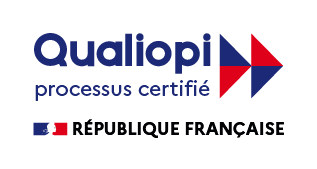Comprendre et lire un bilan comptable est crucial dans le monde des affaires. Savoir interpréter les informations qu’il contient permet aux entreprises de prendre des décisions pertinentes et efficaces. Cet article offre une présentation complète de ce qu’est un bilan comptable en anglais. En le lisant, vous obtiendrez une compréhension de base du concept, et les mots clés vous aideront à enrichir votre vocabulaire de ce sujet important. Une traduction de ces mots sera disponible à la fin de l’article.
Whether you are already in business or thinking about starting a new company, there are a number of tasks that can be quite overwhelming, particularly when it comes to understanding and interpreting financial statements. A balance sheet is one the most important financial statements for businesses. Knowing how to understand a balance sheet is essential for businesses that want to make good and effective decisions, and proficiency in this can propel a business to success.
What is a balance sheet
A balance sheet is a financial statement that provides an overview of a company’s financial position at any given time usually at the end of a fiscal period. Reading a balance sheet is like being presented with a snapshot of a company’s financial health and gives a clear picture of what a company owns (assets), what it owes (liabilities), and what is left for the owners (shareholders’ equity).
Components of a Balance Sheet
Assets
Assets can be described as the possessions a company owns that holds value, for example a company car, or an office building that is owned outright would be considered an asset. When creating a balance sheet, it is important that you organise assets, starting with current assets that can be quickly turned to cash, and then continuing on to long-term assets that cannot be immediately converted to cash.
Categorisation of assets
Current assets:
Liquid assets: This is essentially cash and cash equivalents, including certificates of deposit.
Accounts receivable (A/R): Money that is owed to your company by clients.
Marketable securities: Liquid assets readily convertible into cash.
Inventory: These are goods that are in possession of the company that are available for sale
Prepaid expenses: These are values that have already been compensated for, for example payments for rent, insurance, and vendor contracts.
Long term assets:
Investments: These are securities that cannot be liquidated within the next year.
Fixed assets: A company’s fixed assets include land, machinery, buildings, and other durable assets.
Intangible assets: This includes non-physical and intellectual property, brand awareness, and company reputation. Such assets are typically only included on the balance sheet if they are purchased rather than produced internally.
If you are interested in learning more about assets check out https://www.forbes.com/advisor/investing/what-are-assets/ for some additional information.
Liabilities
Liabilities are essentially the money a company owes to external parties and they are usually divided into current and long-term liabilities
Current liabilities include a number things such as, customer prepayments, wages, debt payments.
Long-term liabilities include items like interest on bonds, pension funds, and deferred tax liabilities.
If you require additional information on what a current liability is, you should click on the following link https://www.investopedia.com/terms/c/currentliabilities.asp
Shareholder Equity
Shareholder equity in essence is a company’s net assets. Among these net assets are:
Money that has been generated by a company.
Capital that has been put into a business by its owners and shareholders.
Any other capital that has been invested into the business.
Total equity can be calculated by subtracting liabilities from total assets.
For a better understanding of what shareholder equity is you should go to https://www.investopedia.com/terms/s/shareholdersequity.asp for some additional information.
Why Is a Balance Sheet Important?
Balance sheets are central to accounting and business practice due to the overview they provide of a company’s financial health. It helps a business evaluate risk, a balance sheet lists everything that a company owns and owes, meaning that these can be quickly assessed when necessary. Balance sheets are essential to securing external capital. Usually before seeking a business loan or arranging a meeting with potential investors, it is usually expected that an up to date balance sheet is presented. Investors and lenders generally feel at ease when they are able to see that a company is capable of smoothly managing its financial obligations. In addition to this, departments within a company can also utilise this information to gain insight into a company’s financial situation. This kind of insight helps in tracking payments and assessing available cash for paying vendors, expenses and possible investment opportunities.
Grasping the fundamentals of what a balance sheet is and the function it serves, is a vital skill for any business owner or manager. It offers a glimpse into a company’s financial position and helps executives make informed decisions.
Traduction des mots surlignés
Overwhelming Écrasante
Assets Actifs
Liabilities Passif
Shareholders equity Capitaux propres
Liquid Assets Actifs liquids
Accountants receivable Comptes débiteurs
Fixed assets Actifs immobilisés
Intangible assets Immobilisations incorporelles
Pour en savoir plus sur nos formation en anglais juridique consultez cette page.




